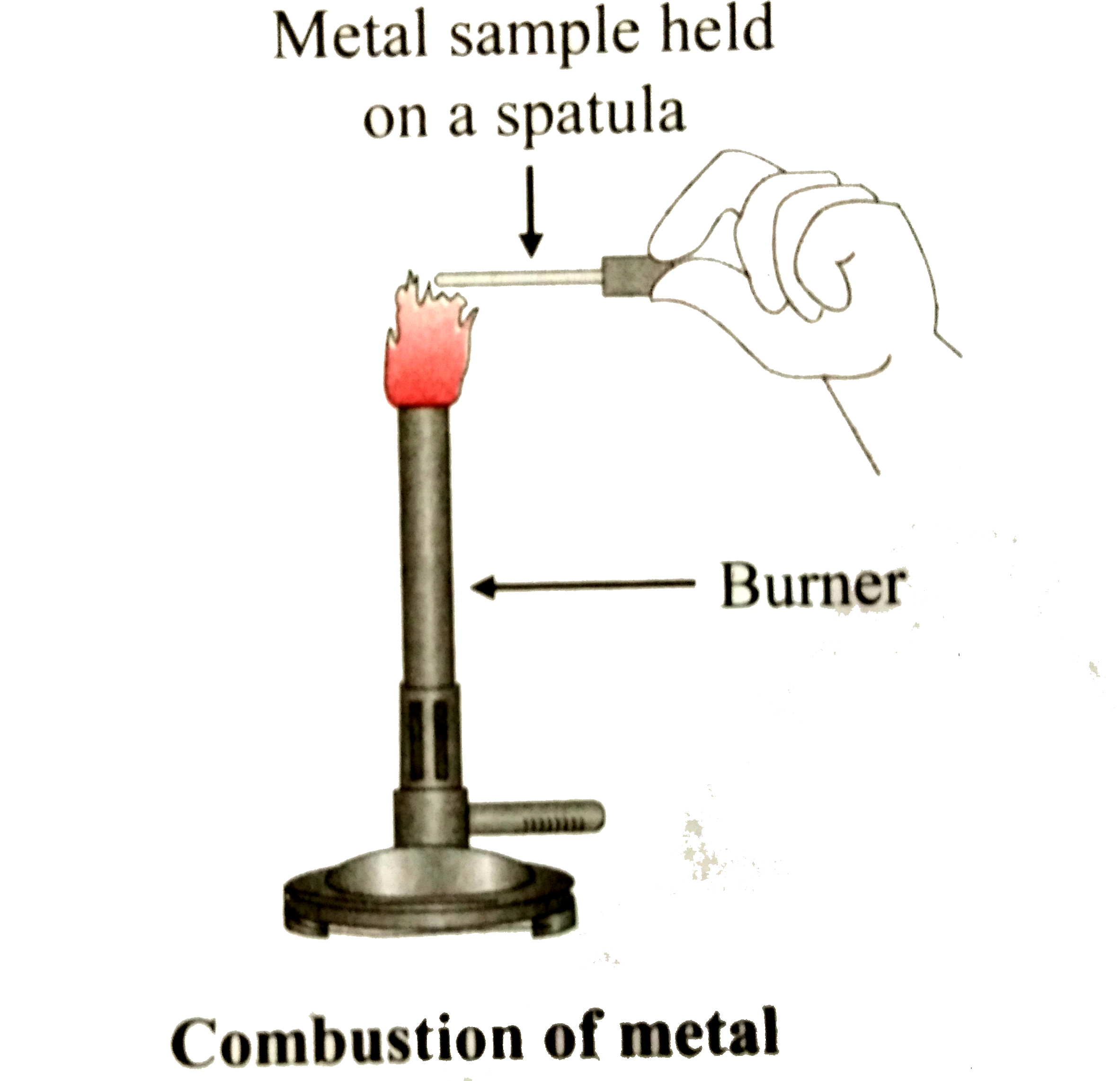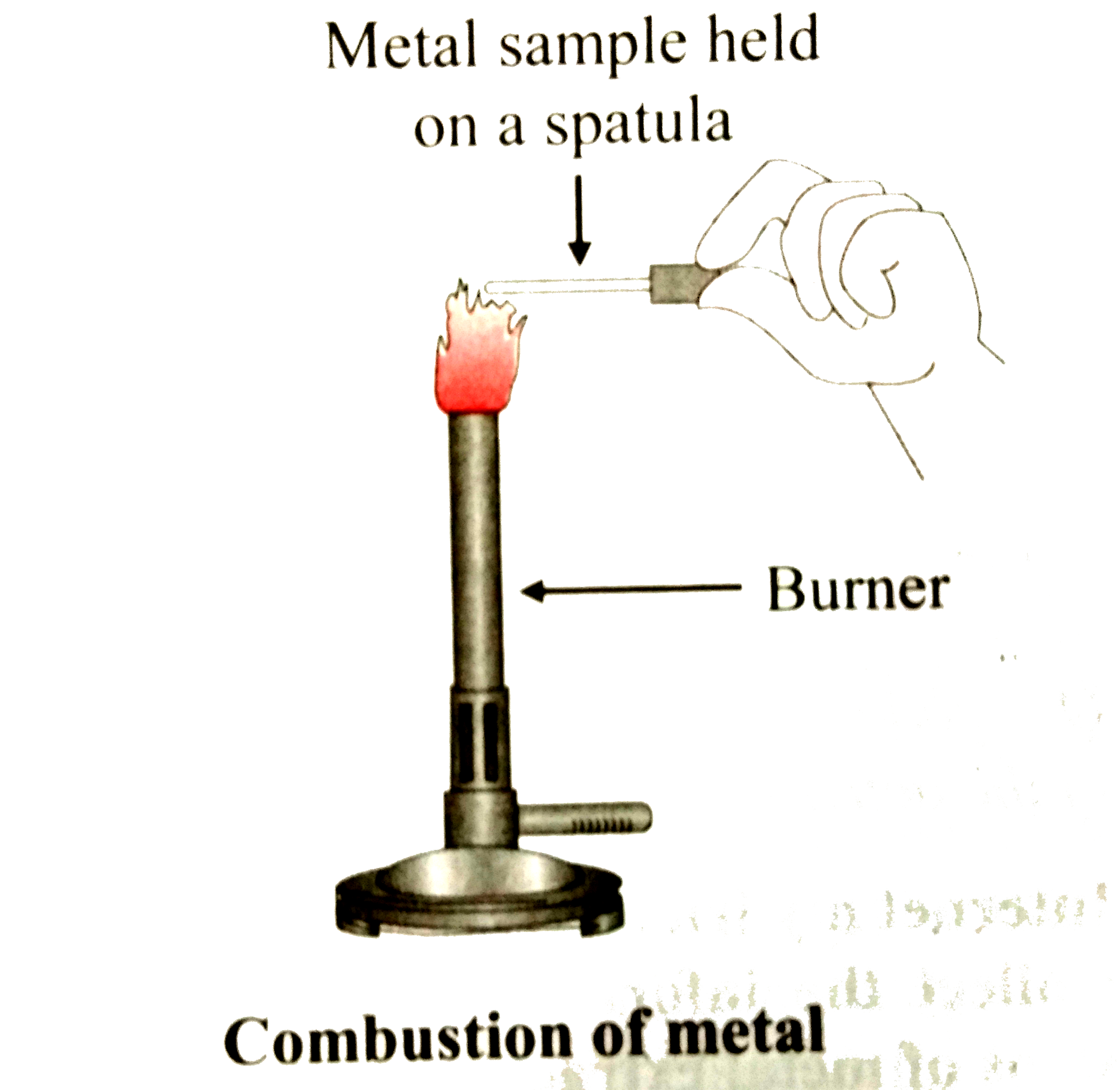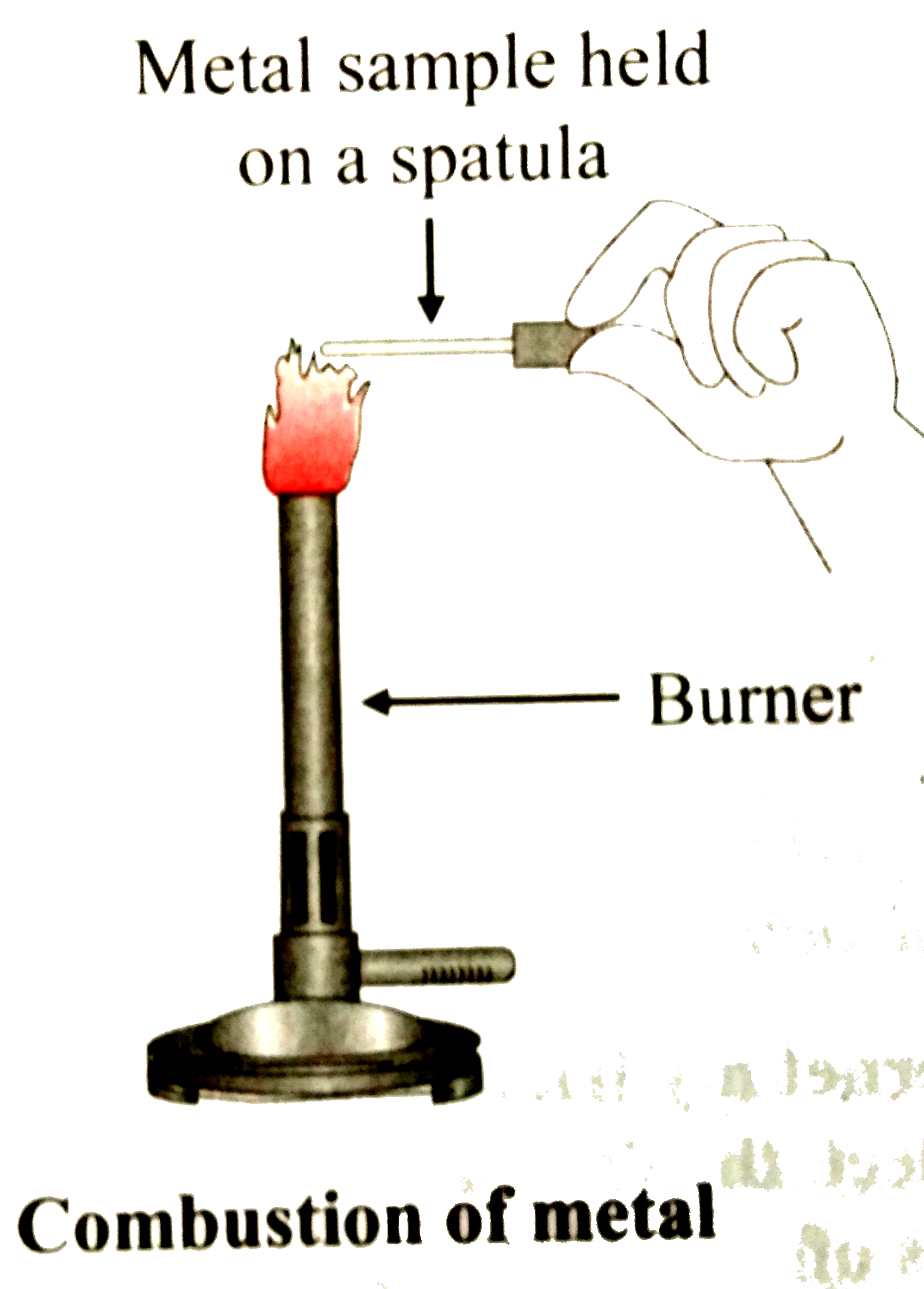Apparatus: Test tube, glass rod, beaker, Bunsen burner, etc.
Chemicals: Hydrochloric acid, ammonia solution, magnesium strip, quick lime, etc.
Activity 2: Hold a magnesium (Mg) strip in a pair of tongs and ignite. What will you observe?
When a magnesium strip is ignited in air, magnesium combines with oxygen from air to form a white powder of magnesium oxide.
2Mg(s)Magnesium+O2(g)OxygenΔ−−→2MgO(s)Magnesium oxide
Topper's Solved these Questions
- CHEMICAL REACTIONS AND EQUATIONSBOOK - TARGET PUBLICATIONCHAPTER - CHEMICAL REACTIONS AND EQUATIONSEXERCISE - Chapter Assessment
11 Videos
- CHEMICAL REACTIONS AND EQUATIONSBOOK - TARGET PUBLICATIONCHAPTER - CHEMICAL REACTIONS AND EQUATIONSEXERCISE - Give balanced chemical equation
26 Videos
- CHEMICAL REACTIONS AND EQUATIONSBOOK - TARGET PUBLICATIONCHAPTER - CHEMICAL REACTIONS AND EQUATIONSEXERCISE - Questions based on paragraph
20 Videos
- CARBON COMPOUNDSBOOK - TARGET PUBLICATIONCHAPTER - CARBON COMPOUNDSEXERCISE - Chapter Assessment(Give scientific reasons.)
4 Videos
- METALLURGYBOOK - TARGET PUBLICATIONCHAPTER - METALLURGYEXERCISE - CHAPTER ASSESSMENT
19 Videos
Similar Questions
Apparatus: Test tube, glass rod, beaker, Bunsen burner, etc.
Chemicals: Hydrochloric acid, ammonia solution, magnesium strip, quick lime, etc.
Activity 3: Take water in a beaker up to half of its capacity. Add a few pieces of quick lime (calcium oxide, CaO) to it. What will you observe?
View SolutionApparatus: Test tube, glass rod, beaker, Bunsen burner, etc.
Chemicals: Hydrochloric acid, ammonia solution, magnesium strip, quick lime, etc.
Activity 3: Take water in a beaker up to half of its capacity. Add a few pieces of quick lime (calcium oxide, CaO) to it. What will you observe?
View SolutionApparatus: Test tube, glass rod, beaker, Bunsen burner, etc.
Chemicals: Hydrochloric acid, ammonia solution, magnesium strip, quick lime, etc.
Activity 1: Take a small amount of hydrochloric acid in a test tube. Heat the test tube. Dip a glass rod in the ammonia solution and hold on the top of the test tube. You will observe a white smoke emanating from the tip of the glass rod. What must have happened?
View SolutionApparatus: Test tube, glass rod, beaker, Bunsen burner, etc.
Chemicals: Hydrochloric acid, ammonia solution, magnesium strip, quick lime, etc.
Activity 1: Take a small amount of hydrochloric acid in a test tube. Heat the test tube. Dip a glass rod in the ammonia solution and hold on the top of the test tube. You will observe a white smoke emanating from the tip of the glass rod. What must have happened?
View SolutionApparatus : Test tube, beakers, burner, etc.
Chemicals : Glacial ethanoic acid, ethanol, concentrated sulphuric acid, etc.
Procedure : Take 1 mL ethanol and 1 mL glacial ethanoic acid in a test tube. Add a few drops of concentrated sulphuric acid in it. Keeps this test tube in the beaker containing hot water (hot water bath) for five minutes. Then take 20-30 mL water in another beaker, and pour the above reaction mixture in it and smell it.
What can you say about the smell of the reaction mixture?
View SolutionApparatus : Test tube, beakers, burner, etc.
Chemicals : Glacial ethanoic acid, ethanol, concentrated sulphuric acid, etc.
Procedure : Take 1 mL ethanol and 1 mL glacial ethanoic acid in a test tube. Add a few drops of concentrated sulphuric acid in it. Keeps this test tube in the beaker containing hot water (hot water bath) for five minutes. Then take 20-30 mL water in another beaker, and pour the above reaction mixture in it and smell it.
What can you say about the smell of the reaction mixture?
View SolutionApparatus: Test tube, Bunsen burner, measuring cylinder, dropper, etc.
Chemicals : Ethanol,sodium carbonate, dilute solution to it and warm the mixture by holding the test tube on the burner for a while. Do drop wise addition of a dilute solution of potassium permanganate to this warm mixutre with stirring.
Does the typical pink colour of potassium permanganate stay as it is on addition? Does the pink colour stop vanishing and stays on after some time of the addition process?
View SolutionApparatus: Pairs of tongs or spatula, knife, burner, etc.
Chemicals: Samples of aluminium, copper, iron, lead, magnesium, zinc and sodium.
Procedure: Hold the sample of each of the above metals at the top of the flame of a burner with the help of a pair of tongs, or a spatula

What is the colour of the flame while the metal is burning on the flame?
View SolutionApparatus: Pairs of tongs or spatula, knife, burner, etc.
Chemicals: Samples of aluminium, copper, iron, lead, magnesium, zinc and sodium.
Procedure: Hold the sample of each of the above metals at the top of the flame of a burner with the help of a pair of tongs, or a spatula

How does the surface of a metal appear on catching fire?
View SolutionApparatus: Pairs of tongs or spatula, knife, burner, etc.
Chemicals: Samples of aluminium, copper, iron, lead, magnesium, zinc and sodium.
Procedure: Hold the sample of each of the above metals at the top of the flame of a burner with the help of a pair of tongs, or a spatula

Which metal catches fire readily?
View Solution
